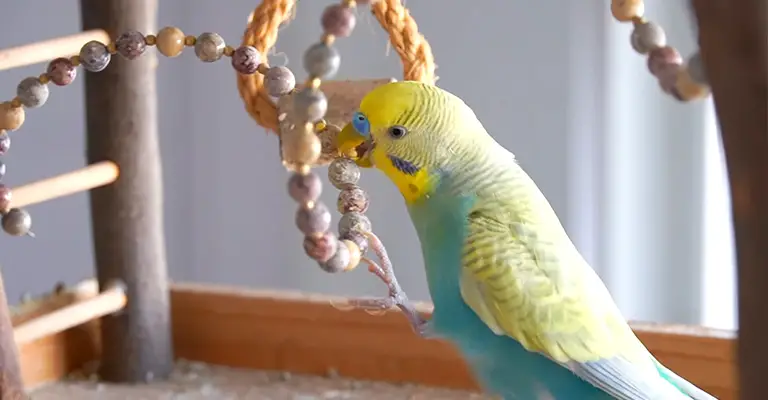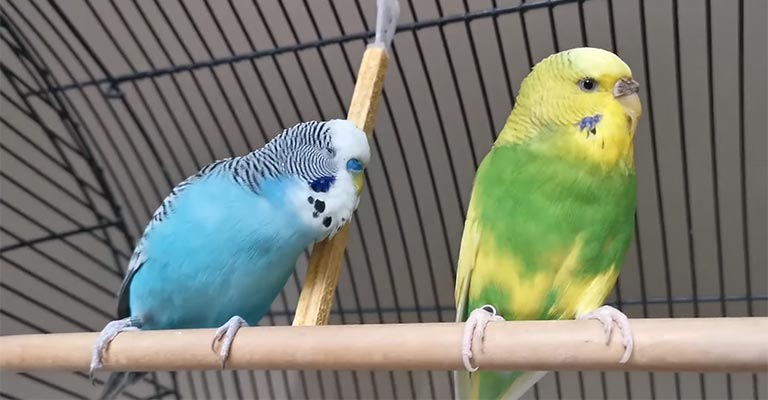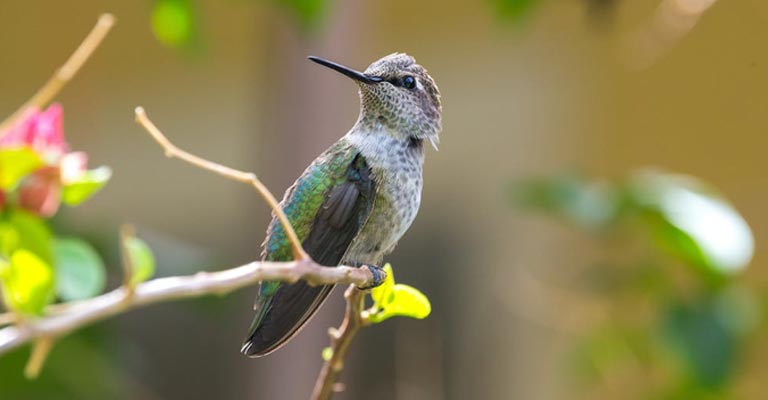Observing your pet bird swaying side to side can be both fascinating and puzzling. This rhythmic and often graceful movement is a common behavior in many avian species, but its meaning can vary significantly.
Understanding why is my bird swaying side to side is essential for responsible bird ownership and ensuring your feathered friend’s well-being.
It’s a behavior that can signify various emotions, from contentment and playfulness to stress or even potential health issues.
This article delves into the reasons behind birds swaying side to side, shedding light on the diverse meanings of this behavior.
Whether it’s an expression of happiness, a response to their environment, or an indicator of discomfort, deciphering the context and accompanying behaviors is crucial.
By gaining insights into what’s behind your bird’s swaying, you can provide the appropriate care and attention needed to keep them happy and healthy.

Why Is My Bird Swaying Side To Side?
Here’s why is my bird swaying side to side:
Natural Behavior
Birds, especially parrots and cockatiels, often sway side to side as a natural behavior. This swaying can indicate contentment, relaxation, or a bird’s way of adjusting its balance and position on a perch.
If your bird appears healthy and active while swaying, it is likely just expressing its natural behavior.
Social Interaction
Swaying can be a form of social interaction. Birds may sway in response to the movement of nearby birds or humans, signifying communication and bonding within a flock or with their owners.
Entertainment or Playfulness
Birds often sway when they are entertained or playful. Providing stimulating toys, mirrors, or objects that promote mental and physical engagement can trigger this swaying behavior as they interact with their environment.
Courtship Rituals
During courtship, male birds may sway side to side as a display to attract a mate. This behavior is particularly common in species like budgies and cockatoos.
If you have both male and female birds, observe their interactions to discern if this behavior is part of a courtship display.
Illness or Discomfort
Swaying can sometimes indicate illness or discomfort, especially when accompanied by other abnormal behaviors like fluffed feathers, changes in appetite, or difficulty breathing.
It might be a sign of an underlying health issue, such as respiratory problems or balance disorders. If you notice any concerning symptoms, consult an avian veterinarian for a thorough examination.
Stress or Anxiety
Birds may sway when they are stressed or anxious. Changes in their environment, the presence of new pets, or loud noises can cause stress-related behaviors. Providing a calm and consistent environment can help alleviate stress-induced swaying.
Digestive Issues
Digestive problems, such as crop issues or gastrointestinal discomfort, can cause birds to sway. If your bird is experiencing digestive distress, it may sway or exhibit discomfort.
Regular veterinary check-ups and a balanced diet can help prevent digestive problems.
Observing your bird’s swaying behavior within the context of its overall health and environment is essential.
While natural swaying and social interactions are normal, any significant or sudden changes in behavior, especially when accompanied by other symptoms, warrant a vet’s evaluation to ensure your bird’s well-being.
Factors That Influence Swaying Behavior

Swaying behavior in birds can be influenced by various factors, reflecting their physical and emotional states. Here are some factors that contribute to and influence swaying behavior:
Natural Instincts
Birds, such as parrots and cockatiels, have a natural instinct to sway. Swaying can be a way for them to adjust their balance, position themselves comfortably on a perch, or simply engage in a natural behavior.
It’s part of their repertoire for navigating their surroundings and maintaining their well-being.
Social Interaction
Birds are highly social creatures. Swaying can be a form of communication and interaction with other birds, including bonding, courtship, or displays of affiliation.
Swaying in the presence of other birds or humans often signifies their social nature and the need for companionship.
Entertainment and Playfulness
Birds are playful animals, and they often sway when they’re entertained or having fun. Providing them with stimulating toys, objects to explore, or mirrors for interaction can trigger this behavior, indicating their enjoyment and mental engagement.
Courtship and Mating Rituals
During the courtship and mating season, many bird species exhibit specific swaying behaviors as part of their courtship rituals. Male birds may sway side to side to attract potential mates, signaling their reproductive readiness and suitability as partners.
Stress and Anxiety
Birds can sway when they’re stressed or anxious. Changes in their environment, the introduction of new pets, or loud noises can lead to stress-related swaying.
Observing and addressing the source of stress, along with providing a calm and secure environment, can help alleviate such behaviors.
Illness and Discomfort
Swaying can also be a sign of illness or physical discomfort. When birds are unwell, they may sway as a response to pain or discomfort.
Swaying, especially when accompanied by other abnormal behaviors, should prompt a visit to an avian veterinarian for a thorough examination and diagnosis.
Digestive Health
Digestive issues, such as crop problems or gastrointestinal discomfort, can lead to swaying behavior in birds.
Swaying may indicate discomfort related to digestion, and a balanced diet, as well as regular veterinary check-ups, can help prevent or address these problems.
Understanding these factors that influence swaying behavior is crucial for bird owners.
It allows them to interpret their feathered companions’ actions and respond appropriately to their physical and emotional needs, ultimately contributing to their well-being and happiness.
What Does It Mean When They Sway?

Here’s what does it mean when they sway:
Natural Balance and Comfort
Swaying is a natural behavior in birds, especially parrots, and it helps them maintain balance and position on perches. When they sway gently, it often signifies that they are comfortable and at ease in their environment.
Birds may sway while perched to find the most comfortable and stable position, ensuring they feel secure and relaxed.
Social Interaction and Bonding
Swaying can be a form of social interaction among birds. In a flock or with their human companions, birds may sway as a way to bond and communicate. It signifies their contentment and acceptance of the social group, reflecting a sense of belonging and security.
Expression of Happiness
Swaying, especially in combination with vocalizations and playful movements, can indicate happiness and contentment.
Happy birds often engage in swaying behavior as they explore their surroundings, interact with toys, or enjoy positive interactions with their owners. It showcases their joy and satisfaction.
Courting and Mating Rituals
During the mating season, swaying is a significant part of courtship rituals. Male birds sway to attract potential mates, displaying their vitality and suitability as partners.
Female birds may also sway in response, indicating their receptiveness to the courtship.
Stress or Anxiety
On the flip side, swaying can indicate stress or anxiety in birds. When they feel threatened, scared, or uneasy due to changes in their environment, the presence of predators, or loud noises, they may sway nervously.
Observing their body language and identifying the cause of stress is crucial in alleviating these feelings.
Playfulness and Curiosity
Young and playful birds often sway during playtime. It can indicate their curiosity and excitement as they explore new toys, objects, or environments. Swaying in a playful context is a positive behavior, highlighting their inquisitive nature and desire for stimulation.
Health Issues or Discomfort
In some cases, abnormal or excessive swaying can be a sign of health issues, such as neurological problems or physical discomfort.
Birds may sway involuntarily when they are unwell, indicating an underlying problem that requires immediate veterinary attention. Monitoring their behavior and seeking professional advice is crucial in such situations.
Understanding the context and accompanying behaviors is key to interpreting what swaying means in your specific bird. Positive swaying, such as during play or social interactions, signifies contentment and happiness.
However, sudden or abnormal swaying, especially when combined with other concerning signs, should be addressed promptly to ensure your bird’s well-being.
FAQs
Why is my bird swaying side to side, and is it normal behavior?
Swaying side to side is a common behavior in many bird species and can be entirely normal. It often signifies contentment, playfulness, or balance adjustments. However, it’s essential to consider the context and accompanying behaviors.
What does it mean when my bird sways side to side during playtime?
Swaying during playtime typically indicates that your bird is engaged, curious, and excited. It’s a positive expression of playfulness and enjoyment, showcasing their need for mental and physical stimulation.
Can swaying be a sign of illness in birds?
Yes, unusual or excessive swaying can sometimes be a sign of underlying health issues or discomfort. If your bird’s swaying is accompanied by other abnormal behaviors, such as changes in appetite, lethargy, or respiratory problems, consult an avian veterinarian to determine if there is an underlying health concern.
FAQ 4: Why do some birds sway side to side when they’re alone?
Answer: Swaying when alone can be a natural behavior, especially in parrots and cockatiels. It might reflect their way of maintaining balance, adjusting their position on a perch, or expressing contentment.
How can I tell if my bird’s swaying is a sign of stress or anxiety?
Stress-related swaying often occurs when birds feel threatened, anxious, or uneasy due to changes in their environment or loud noises. Swaying accompanied by signs of stress, like fluffed feathers or attempts to hide, may indicate that your bird is stressed.
Conclusion
The swaying behavior in birds serves as a fascinating window into their world, conveying a spectrum of emotions and needs. As bird owners, deciphering the reasons behind why your bird sways side to side is vital for their well-being.
This rhythmic movement can express happiness, social interaction, or playfulness, but it can also be a signal of stress or even underlying health issues.
To ensure the best care for your avian companion, it’s essential to observe their swaying in context. Consider their overall behavior, any accompanying signs, and the circumstances in which the swaying occurs.
Positive swaying is often part of their natural repertoire, while unusual or excessive swaying should prompt a closer look and if needed, consultation with an avian veterinarian.
By understanding the nuanced meanings behind their swaying, you can provide the support and environment that best suits their unique needs, ultimately enhancing their quality of life.